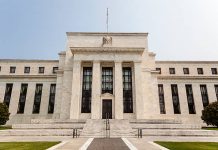- Canadian consumer prices were up 1% year-on-year in November, accelerating from 0.7% in October.
- Prices rose in six of eight major categories on a year-on-year basis, but only “health and personal care” was above 2%. Higher prices for “recreation, education and reading” was the main driver of the acceleration in inflation in the month. Prices for the category were up 1.0% year-on-year (up from -1.3% in October).
- Month-on-month, seasonally adjusted prices rose 0.3%. The biggest movers in the month was the recreation, reading and education index, which rose 1.9%, followed by clothing and footwear, which rose 1.7%. Food prices retreated 0.2%, following a strong 0.8% rise in October.
- The Bank of Canada’s core inflation measures were all unchanged in November, CPI-trim at 1.7%, CPI-median at 1.9%, and CPI-common at 1.5%.
Key Implications
- Not much to see here. Its hard to get excited about inflation that has remained so consistently below 2%. The Bank of Canada’s pledge to keep monetary policy accommodative, which hinges on bringing inflation convincingly back to 2%, is of little risk of changing course with this reading.
- The pandemic’s impact is evident in the data in some intuitive and some less intuitive ways. Increased demand and therefore higher prices for durable goods – items that make staying at home a bit more tolerable – is one of the more obvious. But, another driver in October was the simple fact that travel prices tend to rise faster in the summer and cool off in the “off season” months (like November), so travel prices don’t look nearly as bad compared to last November as they did in July.













